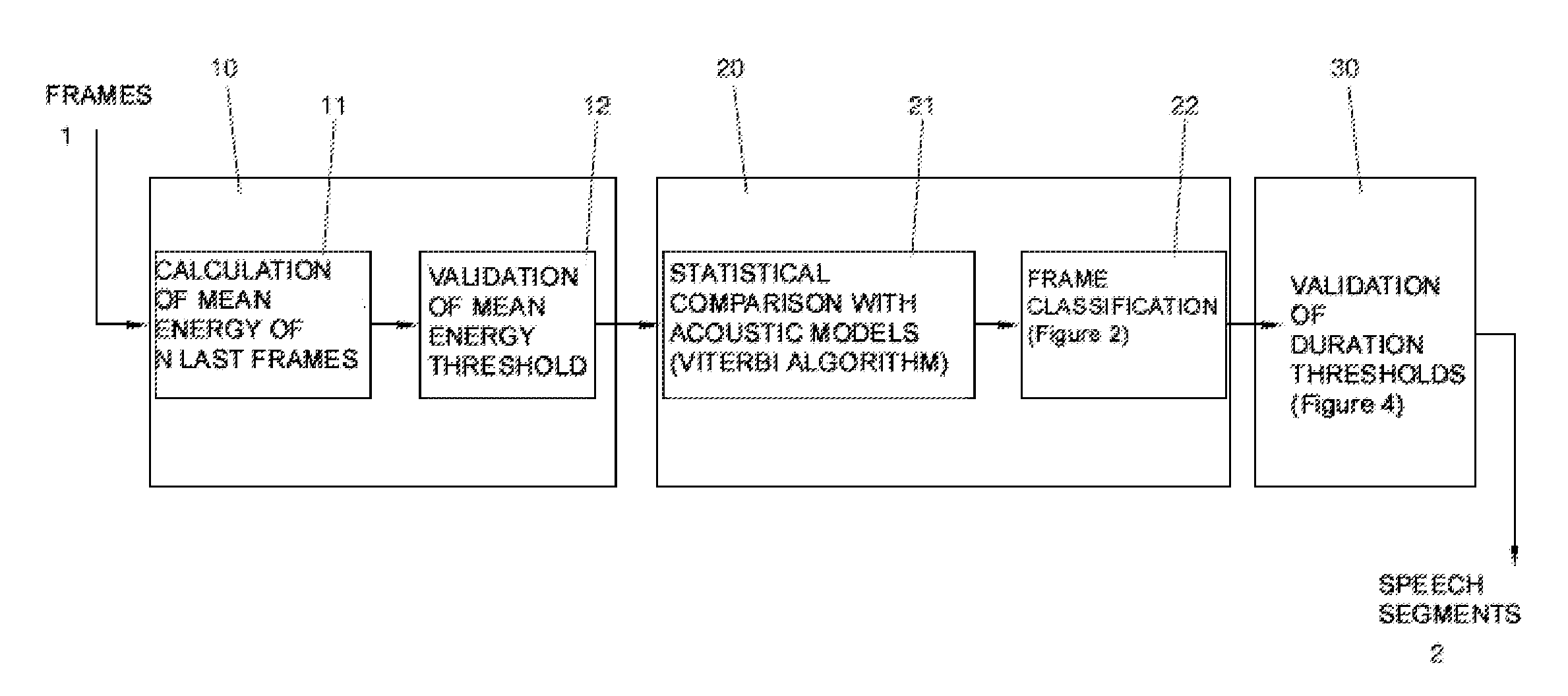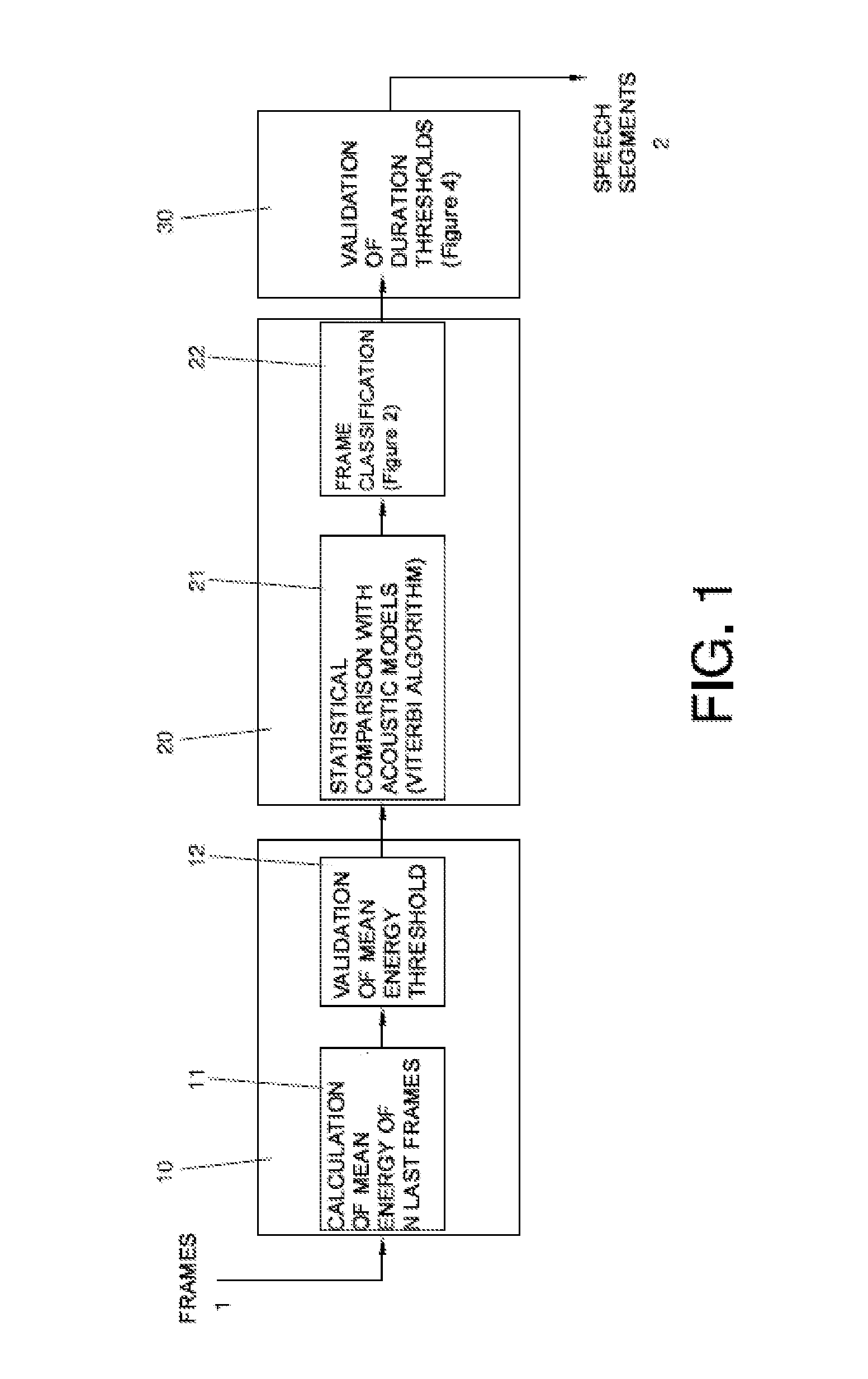Method for the detection of speech segments
- Summary
- Abstract
- Description
- Claims
- Application Information
AI Technical Summary
Benefits of technology
Problems solved by technology
Method used
Image
Examples
Embodiment Construction
[0040]According to the preferred embodiment of the invention, the method for the detection of noise and speech segments is carried out in three stages.
[0041]As a step prior to the method, the input signal is divided into frames of a very short duration (between 5 and 50 milliseconds), which are processed one after the other.
[0042]As is shown in FIG. 1, the energy is calculated for each frame 1 in a first stage 10. The average of the energy value for this frame and the previous N frames is calculated (block 11: calculation of mean energy of N last frames), where N is an integer the values of which vary depending on the environment; typically N=10 in environments with little noise and N>10 for noisy environments. Then, this mean value is compared (block 12: validation of mean energy threshold) with a first energy threshold Threshold_energ1, the value of which is modified in the second stage depending on the noise level, and the initial value thereof being configurable; typically, for ...
PUM
 Login to View More
Login to View More Abstract
Description
Claims
Application Information
 Login to View More
Login to View More - R&D
- Intellectual Property
- Life Sciences
- Materials
- Tech Scout
- Unparalleled Data Quality
- Higher Quality Content
- 60% Fewer Hallucinations
Browse by: Latest US Patents, China's latest patents, Technical Efficacy Thesaurus, Application Domain, Technology Topic, Popular Technical Reports.
© 2025 PatSnap. All rights reserved.Legal|Privacy policy|Modern Slavery Act Transparency Statement|Sitemap|About US| Contact US: help@patsnap.com



